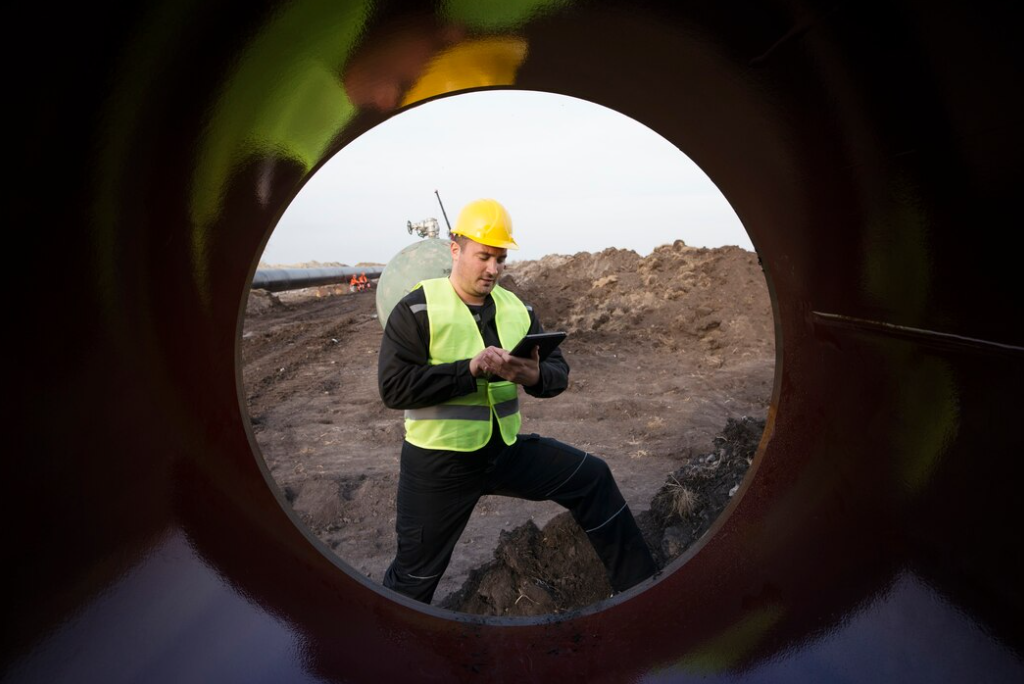Pinhole leaks in copper pipes have been a persistent problem in plumbing systems for many years. These tiny, localized leaks can result in significant water damage and costly repairs, making it crucial to understand their causes and find effective solutions. This article aims to investigate the various factors that contribute to the development of pinhole leaks in copper pipes.
One of the main causes of pinhole leaks in copper pipes is corrosion. Over time, the natural chemical reactions that occur between the copper and water can weaken the pipe, leading to the formation of tiny holes. Corrosion can be accelerated by certain water conditions, such as low pH levels and high levels of dissolved oxygen or chloride. Improper water treatment and poor plumbing practices can also contribute to corrosion and the subsequent development of pinhole leaks.
Another factor that can contribute to pinhole leaks is water velocity. When water flows too rapidly through a pipe, it can cause erosion of the copper surface, creating weak spots that are prone to developing leaks. This is particularly common in systems with high water pressure or where water hammer occurs. By regulating water pressure and ensuring proper pipe sizing, it is possible to minimize the risk of pinhole leaks caused by excessive water velocity.
Lastly, the quality of the copper itself can play a role in the development of pinhole leaks. Copper pipes that contain impurities or have manufacturing defects are more susceptible to corrosion and are prone to developing leaks. It is important to use high-quality, properly manufactured copper pipes to minimize the risk of pinhole leaks. Additionally, proper installation techniques, such as avoiding excessive bending or stretching of the pipes, can help prevent the development of weak spots and leaks.
In conclusion, pinhole leaks in copper pipes can be caused by a combination of factors, including corrosion, water velocity, and the quality of the copper. Understanding these causes is essential for implementing effective preventive measures and ensuring the longevity of plumbing systems. By addressing these factors, it is possible to minimize the occurrence of pinhole leaks and avoid the associated water damage and repair costs.
Overview of Pinhole Leaks in Copper Pipes
Pinhole leaks in copper pipes have become a prevalent issue in plumbing systems. These tiny holes can lead to significant water damage and costly repairs if left untreated. Understanding the causes of pinhole leaks is essential for homeowners, plumbers, and researchers to develop effective strategies for prevention and repair.
Potential Causes of Pinhole Leaks
1. Corrosion: One of the primary causes of pinhole leaks in copper pipes is corrosion. Over time, minerals and chemicals in water can corrode the inner surface of the pipes, creating small holes. Factors such as water pH, oxygen levels, and temperature can contribute to the rate of corrosion.
2. Water Quality: The quality of the water flowing through copper pipes can also affect the occurrence of pinhole leaks. High levels of acidity, alkalinity, or hardness can accelerate the corrosion process and weaken the pipe’s structure.
3. Velocity of Water Flow: The velocity at which water flows through the pipes can also play a role in the formation of pinhole leaks. Higher water velocities can erode the protective oxide layer on copper pipes, making them more susceptible to corrosion and eventual leakage.
Effects of Pinhole Leaks
Pinhole leaks can have various detrimental effects on plumbing systems and buildings:
– Structural Damage: If left unnoticed, pinhole leaks can cause structural damage to walls, floors, or ceilings, leading to mold growth, rot, and compromised structural integrity.
– Water Wastage: Even a small pinhole leak can result in significant water wastage over time, leading to higher water bills and environmental concerns.
– Health Risks: Water leakage can create a breeding ground for bacteria and mold, compromising the overall indoor air quality and potentially causing health issues for inhabitants.
– Increased Repair Costs: Delayed detection and repair of pinhole leaks can result in more extensive damage and higher repair costs.
By understanding the causes and effects of pinhole leaks in copper pipes, individuals and professionals in the industry can take proactive measures to prevent or address these issues promptly. Regular maintenance, proper water treatment, and installation of protective measures are all crucial in mitigating the risks associated with pinhole leaks.
Significance of Investigating Pinhole Leaks
Pinhole leaks in copper pipes can have significant consequences for plumbing systems and the overall infrastructure of a building. These small holes allow water to escape from the pipes, leading to water damage, increased maintenance costs, and potential health hazards. Therefore, understanding the causes of pinhole leaks is crucial for preventing their occurrence and mitigating their consequences.
Investigating pinhole leaks in copper pipes can provide valuable insights into the underlying factors that contribute to their formation. By identifying these causes, researchers can develop effective strategies to prevent and address pinhole leaks, thereby saving resources and minimizing the risks associated with water damage.
Pinhole leaks are often attributed to a combination of factors, including the composition of the water, the quality of the copper pipes, and the presence of corrosive elements in the environment. By studying these factors, researchers can refine plumbing standards and make recommendations for improvements in pipe materials and installation techniques.
Furthermore, investigating pinhole leaks is essential for ensuring the safety and well-being of building occupants. Water damage caused by pinhole leaks can lead to the growth of mold and mildew, which can compromise indoor air quality and pose health risks. Additionally, leaks can weaken the structural integrity of buildings over time, potentially resulting in costly repairs and even collapse.
In conclusion, the significance of investigating pinhole leaks in copper pipes cannot be overstated. By understanding the causes of these leaks and implementing preventive measures, the consequences of water damage can be minimized, costs can be reduced, and the safety of building occupants can be ensured.
Corrosion
Corrosion is one of the main factors contributing to pinhole leaks in copper pipes. It refers to the gradual deterioration of the metal due to chemical reactions with its environment. In the case of copper pipes, corrosion can occur for several reasons.
1. Electrochemical corrosion
Electrochemical corrosion occurs when there is a flow of electric current between areas of different potential on the copper surface. This can happen due to the presence of impurities or different dissolved minerals in the water that the pipes carry. The flow of current leads to the oxidation of copper and the formation of pinhole leaks over time.
2. Galvanic corrosion
Galvanic corrosion happens when two dissimilar metals come into contact in the presence of an electrolyte, such as water. In the case of copper pipes, if they are connected to other metal pipes or fittings (e.g., steel), galvanic corrosion can occur. The more noble metal (e.g., copper) acts as a cathode, while the less noble metal (e.g., steel) acts as an anode. This creates a corrosion cell, leading to the degradation of the copper pipes.
To prevent galvanic corrosion, it is important to use dielectric unions or insulating materials between dissimilar metals in contact with copper pipes.
3. Microbiological corrosion
Microbiological corrosion, also known as microbiologically influenced corrosion (MIC), occurs when bacteria or other microorganisms colonize the inner surfaces of the copper pipes. These microorganisms can produce corrosive byproducts and create an environment conducive to corrosion. MIC can be an issue in areas with high water temperature and inadequate disinfection.
To prevent microbiological corrosion, regular water treatments and proper disinfection procedures should be implemented.
Overall, understanding the different types of corrosion is crucial for investigating the causes of pinhole leaks in copper pipes. By identifying the specific corrosion mechanisms at play, appropriate preventive measures can be taken to prolong the lifespan of copper piping systems.
Corrosion as a Major Cause of Pinhole Leaks
Corrosion is one of the most significant factors contributing to pinhole leaks in copper pipes. Copper pipes are susceptible to different types of corrosion, including pitting corrosion, erosion corrosion, and galvanic corrosion. These corrosive processes can weaken the pipe’s structure, leading to the formation of tiny holes through which water can leak.
Pitting corrosion is characterized by the localized damage to the inner surface of the copper pipe, resulting in the formation of pits or small cavities. It can be caused by various factors, such as high levels of dissolved oxygen, low pH levels, or the presence of aggressive ions in the water supply. Over time, these pits can penetrate the pipe wall, eventually leading to pinhole leaks.
Erosion corrosion occurs when the velocity of the water is high enough to cause the erosion of the protective oxide layer on the inner surface of the copper pipe. This exposes the underlying metal, making it more vulnerable to corrosion. The constant wear and tear caused by the high-velocity water can eventually lead to pinhole leaks.
Galvanic corrosion occurs when different metals are in direct contact in the plumbing system, creating an electrochemical cell. In the presence of an electrolyte, such as water, a flow of electrons occurs between the dissimilar metals, resulting in the corrosion of the less noble metal. When copper pipes are connected to other metals, such as galvanized steel, the galvanic corrosion can cause pinhole leaks.
In addition to these types of corrosion, factors such as water chemistry, microbiological activity, and pipe manufacturing defects can also contribute to the formation of pinhole leaks in copper pipes. Understanding the role of corrosion in causing pinhole leaks is crucial for developing preventive measures and selecting appropriate materials to minimize the occurrence of these leaks.
Types of Corrosion in Copper Pipes
Corrosion is a common issue that can affect copper pipes, leading to pinhole leaks and other damage. Understanding the different types of corrosion can help in identifying the cause and implementing the appropriate solutions.
1. General or Uniform Corrosion
In general corrosion, copper pipes are uniformly corroded over their entire surface. It typically occurs when the pH of the water is outside the recommended range or when copper pipes come into contact with high levels of dissolved oxygen. General corrosion can weaken the pipes and eventually lead to pinhole leaks.
2. Pitting Corrosion
Pitting corrosion is characterized by the formation of small, localized pits or holes on the surface of copper pipes. It is often caused by localized chemical imbalances in the water, such as low pH or the presence of aggressive ions. Pitting corrosion can be difficult to detect visually and may result in the formation of pinhole leaks.
3. Microbiologically Influenced Corrosion (MIC)
MIC occurs when microorganisms, such as bacteria or fungi, attach to the surface of copper pipes and produce corrosive byproducts. This type of corrosion can result in the formation of localized pitting or general thinning of the pipe walls. MIC is often associated with biofilms, which provide a protective environment for the microorganisms.
4. Galvanic Corrosion
Galvanic corrosion occurs when two dissimilar metals are in contact with each other in the presence of an electrolyte, such as water. In copper pipes, galvanic corrosion can occur when they are connected to other metals, such as steel or brass, in plumbing systems. The difference in electrical potential between the metals can result in accelerated corrosion of the copper pipes.
5. Stress Corrosion Cracking (SCC)
Stress corrosion cracking is a form of corrosion that occurs under the combined influence of tensile stress and a corrosive environment. In copper pipes, SCC can result from environmental factors, such as high water velocity, temperature fluctuations, or exposure to certain chemicals. This type of corrosion can lead to the development of small cracks that can eventually grow and cause leaks.
Knowing the different types of corrosion that can affect copper pipes is essential for identifying the underlying causes of pinhole leaks and implementing appropriate preventive measures. Regular inspection, corrosion monitoring, and maintaining water quality within recommended standards are crucial for minimizing the risk of corrosion-related issues in copper plumbing systems.
Water Quality
The quality of the water running through copper pipes can have a significant impact on the likelihood of pinhole leaks forming. It is important to understand the characteristics of the water supply in order to assess its potential impact on the integrity of the pipes.
Chemical Composition
One factor that can affect the corrosion of copper pipes is the chemical composition of the water. Certain elements and compounds in the water, such as dissolved oxygen, sulfates, and chlorides, can promote the formation of pinhole leaks by accelerating the corrosion process.
pH Levels
The pH level of the water can also influence the corrosion rate of copper pipes. Water with a higher or lower pH level than that of neutral water (a pH of 7) can be more corrosive and increase the likelihood of pinhole leaks.
In order to better understand the impact of water quality on the formation of pinhole leaks in copper pipes, it is important to conduct comprehensive testing and analysis. This can involve measuring the chemical composition of the water, monitoring pH levels, and assessing any other relevant factors that may contribute to corrosion.
| Chemical Element/Compound | Potential Impact on Corrosion |
|---|---|
| Dissolved Oxygen | Accelerates corrosion process |
| Sulfates | Promotes formation of pinhole leaks |
| Chlorides | Increases likelihood of pinhole leaks |
Understanding and managing water quality factors can help in preventing the formation of pinhole leaks in copper pipes. Regular monitoring, analysis, and appropriate treatment of the water supply can contribute to the long-term durability and reliability of the plumbing system.
Impact of Water Quality on Copper Pipes
Water quality has a significant impact on the lifespan and performance of copper pipes. The chemical composition of water, specifically its pH level and mineral content, can influence the corrosion process and ultimately lead to pinhole leaks in copper pipes.
One of the major factors affecting the water quality is its pH level. When the pH of water is too acidic or too alkaline, it can accelerate the corrosion of copper pipes. Acidic water with a pH below 7 can dissolve the protective oxide layer on the inner surface of the pipes, making them more susceptible to corrosion. On the other hand, alkaline water with a pH above 8 can cause the formation of carbonate scales, which can restrict the flow of water and lead to localized corrosion.
In addition to pH, the mineral content of water also plays a crucial role in the deterioration of copper pipes. Hard water, which contains high levels of dissolved minerals such as calcium and magnesium, can contribute to the formation of scale buildup inside the pipes. These mineral deposits can provide an environment for the growth of bacteria, which can further accelerate the corrosion process and lead to pinhole leaks.
Furthermore, the presence of certain aggressive ions in water, such as chloride and sulfates, can also contribute to the corrosion of copper pipes. These ions can react with the copper and form compounds that weaken the pipe material, making it more prone to developing small leaks over time.
In order to mitigate the impact of water quality on copper pipes, it is important to monitor and maintain the pH levels of the water within the recommended range of 7 to 8. Regular testing of water quality can help identify any issues and prompt appropriate actions to prevent corrosion. Additionally, the installation of water treatment systems, such as water softeners or pH adjustment systems, can help alleviate the negative effects of hard water and maintain the integrity of copper pipes.
Understanding the impact of water quality on copper pipes is crucial for homeowners and plumbing professionals. By taking the necessary measures to ensure proper water treatment and maintenance, the occurrence of pinhole leaks in copper pipes can be significantly reduced, ultimately prolonging the lifespan of plumbing systems.
Chemical Factors Contributing to Pinhole Leaks
Pinhole leaks in copper pipes can be attributed to several chemical factors that interact with the metal and deteriorate its integrity over time. These factors include:
- Corrosive water: Water with a high acidity or alkalinity can corrode copper pipes and lead to pinhole leaks. The corrosion occurs as a result of the water reacting with the copper, causing the development of small pits that eventually penetrate the pipe walls.
- Sulfur compounds: Some water sources contain sulfur compounds, such as hydrogen sulfide, which can react with copper and form copper sulfide. This reaction weakens the pipe walls and makes them more susceptible to pinhole leaks.
- Oxygen exposure: Copper pipes are vulnerable to pitting corrosion when exposed to high levels of oxygen in the water. Oxygen reacts with the copper and creates localized areas of corrosion, leading to the formation of pinholes.
- Chlorine and chloramines: Water treatment facilities often use chlorine or chloramines to disinfect the water supply. While these chemicals are necessary for public health, they can have a corrosive effect on copper pipes over time. The chlorine or chloramines can react with the copper, causing pitting corrosion and the development of pinhole leaks.
- Aggressive water chemistry: Certain water chemistries, such as high levels of dissolved solids or aggressive pH levels, can accelerate the corrosion of copper pipes. The high concentration of minerals or the extreme pH can erode the protective oxide layer on the copper and expose it to the corrosive effects of the water.
It is important to consider these chemical factors when investigating the causes of pinhole leaks in copper pipes. By identifying and mitigating these factors, it is possible to prevent or minimize the occurrence of pinhole leaks and extend the lifespan of copper plumbing systems.
Microbiological Factors
Microbiological factors have also been identified as potential causes of pinhole leaks in copper pipes. Microorganisms, such as bacteria and fungi, are capable of colonizing and growing on the inner surface of copper pipes, leading to the formation of biofilms. These biofilms can create localized areas of high acidity or alkalinity, which can corrode the copper and eventually result in pinhole leaks.
One possible source of microbiological contamination is the water supply itself. Municipal water sources often contain small amounts of microorganisms, and these can multiply and thrive within a copper pipe system if the conditions are favorable. Additionally, changes in water chemistry, such as fluctuations in pH levels or the presence of organic matter, can promote the growth of certain microorganisms that are more corrosive to copper.
Bacterial Corrosion
Specific bacteria have been identified as being particularly corrosive to copper pipes. Sulfate-reducing bacteria (SRB), for example, produce hydrogen sulfide as a byproduct of their metabolism. Hydrogen sulfide is highly corrosive to copper, and the presence of SRB in a water system can lead to accelerated corrosion and pinhole leaks.
Another group of bacteria known as acid-producing bacteria (APB) can generate organic acids, such as acetic acid, that can degrade the protective oxide layer on copper pipes. This can expose the underlying copper to corrosion and increase the likelihood of pinhole leaks.
Fungal Growth
Fungal growth can also contribute to the development of pinhole leaks in copper pipes. Certain types of fungi, such as Aspergillus and Penicillium species, have been found to colonize and thrive in copper pipe systems. The presence of these fungi can lead to the production of organic acids and other metabolites that can corrode copper and cause leaks.
Role of Microorganisms in Copper Pipe Degradation
Microorganisms play a significant role in the degradation of copper pipes, contributing to the formation of pinhole leaks. These microscopic organisms, including bacteria and fungi, can colonize the inner surface of copper pipes and create an environment conducive to corrosion.
One of the main mechanisms by which microorganisms contribute to copper pipe degradation is through the production of corrosive byproducts. Some bacteria and fungi have the ability to produce organic acids and excrete them onto the pipe surface. These organic acids, such as acetic acid or lactic acid, can react with copper and form soluble copper complexes. Over time, these complexes can erode the copper and weaken the pipe walls, eventually leading to pinhole leaks.
In addition to producing corrosive acids, microorganisms can also create localized oxygen concentration cells on the pipe surface. This occurs when microorganisms consume oxygen as part of their metabolic processes, leading to a depleted oxygen environment near the pipe surface. Within these localized oxygen concentration cells, corrosion can be accelerated, further contributing to the degradation of copper pipes.
The presence of microorganisms in water systems, such as biofilms, can also provide a protective environment for corrosion to occur. Biofilms are complex communities of microorganisms that form on surfaces in water systems. They can create a protective matrix around themselves, shielding them from environmental stresses and making it difficult for traditional corrosion control measures to be effective. Within biofilms, microorganisms can create microenvironmental conditions that promote corrosion, exacerbating the degradation of copper pipes.
Understanding the role of microorganisms in copper pipe degradation is crucial in developing effective strategies for mitigating pinhole leaks. By implementing measures to control microbial growth, such as disinfection or biofilm removal, the rate of copper pipe degradation can be significantly reduced. Additionally, the use of corrosion inhibitors and proper water treatment can help mitigate the corrosive effects of microbial byproducts. Overall, a holistic approach that considers both microbial and chemical factors is essential in preventing pinhole leaks and ensuring the longevity of copper pipe systems.
Types of Microorganisms Causing Pinhole Leaks
Pinhole leaks in copper pipes can be caused by various types of microorganisms. These microorganisms can colonize the inner surface of the pipes and create the conditions necessary for corrosion and subsequent leak formation. Understanding the different types of microorganisms involved in this process can help in developing effective strategies for prevention and treatment.
1. Bacterial Biofilms: Bacteria are one of the main culprits behind the formation of pinhole leaks. Biofilms, consisting of bacterial colonies, can develop on the inner surface of copper pipes. These biofilms produce corrosive byproducts that gradually eat away at the pipe, leading to the formation of pinhole leaks.
2. Fungi: Certain types of fungi, such as Aspergillus and Penicillium, can also contribute to the formation of pinhole leaks. These fungi thrive in high humidity environments and can grow on the inner surface of copper pipes. Their growth can accelerate corrosion and weaken the pipe, creating vulnerabilities that eventually result in pinhole leaks.
3. Algae: Algae growth is another source of pinhole leaks in copper pipes. Algae can develop in stagnant water or areas with poor drainage, creating a conducive environment for corrosion. As algae multiply and form colonies, they release acidic byproducts that corrode the pipe and lead to pinhole leaks.
4. Microbial Sulfate Reduction: Certain microorganisms have the ability to reduce sulfate compounds present in water into sulfide compounds. These sulfide compounds can react with copper pipe materials, causing corrosion and the eventual formation of pinhole leaks. Microbial sulfate reduction is commonly found in water supplies with high levels of sulfate.
5. Iron-Related Bacteria: Iron-related bacteria, including species like Gallionella and Leptothrix, can also contribute to the formation of pinhole leaks in copper pipes. These bacteria have the ability to oxidize iron present in water and create deposits on the inner pipe surfaces. These deposits can create localized corrosion, leading to pinhole leaks.
By identifying and understanding the types of microorganisms involved in pinhole leak formation, researchers and plumbers can develop effective prevention and treatment strategies. These strategies may include regular pipe inspections, proper maintenance of water quality, and the use of antimicrobial treatments to inhibit microorganism growth.
Stress and Strain
Stress and strain are key factors that can contribute to the formation of pinhole leaks in copper pipes. Understanding the relationship between stress and strain is essential for investigating the causes of these leaks.
Definition of Stress and Strain
Stress is defined as the force applied per unit area. In the context of copper pipes, stress can be caused by a combination of factors such as water pressure, temperature fluctuations, and external forces. Strain, on the other hand, is a measure of the deformation or change in shape that a material experiences when subjected to stress.
The Effects of Stress on Copper Pipes
Copper pipes are commonly used in plumbing systems due to their corrosion resistance and durability. However, when exposed to high levels of stress, they can develop pinhole leaks. The stress can cause localized thinning of the pipe walls, leading to the formation of tiny holes.
One of the main sources of stress in copper pipes is water pressure. As water flows through the pipes, it exerts pressure on the walls. If the pressure is too high or if there are sudden changes in pressure, the copper may not be able to withstand the strain, resulting in the development of pinhole leaks.
In addition to water pressure, temperature fluctuations can also contribute to the formation of stress in copper pipes. When the temperature of the water inside the pipes changes, the copper expands or contracts. These expansions and contractions can create strains on the pipe walls, potentially leading to the formation of pinhole leaks.
Possible Solutions
To mitigate the risk of pinhole leaks in copper pipes, it is important to consider the effects of stress and strain. One possible solution is to install pressure-relief valves or devices that regulate water pressure in the plumbing system. These devices can help prevent excessive stress on the copper pipes.
Furthermore, implementing measures to control temperature fluctuations, such as insulating the pipes or using thermostatic valves, can also help minimize stress and strain on the copper pipes.
Regular inspection and maintenance of the plumbing system is crucial to identify any signs of stress or potential pinhole leaks. Prompt detection and repair of any issues can prevent the leaks from worsening and causing further damage.
- Stress and strain play a significant role in the formation of pinhole leaks in copper pipes.
- Understanding the relationship between stress and strain is essential for investigating the causes of these leaks.
- Water pressure and temperature fluctuations are common sources of stress in copper pipes.
- Pressure-relief valves and measures to control temperature fluctuations can help mitigate stresses on copper pipes.
- Regular inspection and maintenance of the plumbing system are crucial to prevent and address any potential issues.
Mechanical Factors Leading to Pinhole Leaks
Pinhole leaks in copper pipes can be caused by a variety of factors, including mechanical issues related to the installation and operation of the plumbing system. Understanding these mechanical factors is crucial in preventing and addressing pinhole leaks effectively.
1. Pressure fluctuations
High or fluctuating water pressure can lead to stress on copper pipes, weakening them over time and increasing the likelihood of pinhole leaks. Pressure spikes caused by water hammer, sudden valve closures, or other factors can create stress in the pipes, especially at joints and bends.
2. Water velocity
Excessive water velocity inside copper pipes can contribute to pinhole leaks. When water flows too fast through the pipes, it can erode the protective oxide layer on the interior surface, leaving the copper vulnerable to corrosion and eventually leading to leaks.
- Reducing water velocity through proper pipe sizing and flow control devices can help mitigate this risk.
3. Pipe movement and vibration
Mechanical stress caused by pipe movement and vibration can weaken copper pipes and contribute to pinhole leaks. Expansion and contraction due to temperature variations, as well as poor pipe supports and improper installation practices, can lead to repetitive stress on the pipes, eventually causing leaks.
- Minimizing pipe movement through the use of expansion joints, adequate supports, and secure fastening techniques can help prevent pinhole leaks.
4. Chemical corrosion
While not strictly a mechanical factor, chemical corrosion can be exacerbated by mechanical issues and ultimately contribute to pinhole leaks. Water with high mineral content, low pH, or high levels of dissolved oxygen can accelerate corrosion processes, particularly in stressed areas of the pipes.
- Proper water treatment, regular maintenance, and monitoring can help reduce the risk of chemical corrosion and pinhole leaks.
By understanding and addressing these mechanical factors, plumbers and homeowners can take proactive measures to prevent pinhole leaks in copper pipes, ensuring the longevity and reliability of their plumbing systems.
Effects of Pipe Movement and Vibration on Copper Pipes
The movement and vibration of copper pipes can have significant effects on their integrity and can contribute to the development of pinhole leaks. These effects can be observed in both residential and commercial plumbing systems.
Pipe movement: When copper pipes are subjected to movement, such as bending, flexing, or twisting, it can weaken their structure over time. This can lead to the development of stress points along the pipe, where pinhole leaks can occur. Pipe movement can be caused by various factors, including changes in water pressure, temperature fluctuations, and improper installation techniques.
For example, if a copper pipe is not properly supported and experiences repetitive vibrations due to water flow or external factors, it can gradually weaken the pipe wall, making it more susceptible to developing pinhole leaks.
Pipe vibration: Vibration can also have detrimental effects on copper pipes. When water flows through a pipe, it naturally creates vibrations, known as hydraulic shock or water hammer. These vibrations can cause the pipe to shake and rattle, leading to increased stress on the pipe wall. Over time, this can cause micro-abrasions and corrosion on the inner surface of the pipe, resulting in the formation of pinhole leaks.
In addition to natural vibration caused by water flow, external factors such as nearby machinery, construction activities, or earthquakes can also introduce significant vibrations to copper pipes, further increasing the risk of pinhole leaks.
To mitigate the effects of pipe movement and vibration on copper pipes, proper installation techniques and regular maintenance are crucial. This includes using appropriate supports and hangers to minimize pipe movement, as well as ensuring that pipes are properly insulated to reduce vibrations.
Regular inspections should also be conducted to detect any signs of pipe movement or vibration-related damage, such as visible leaks, unusual noises, or changes in water pressure. Prompt repairs or reinforcements can help prevent the development of pinhole leaks and extend the lifespan of copper pipes.
In conclusion, the effects of pipe movement and vibration on copper pipes should not be underestimated. These factors can have a significant impact on the integrity of copper pipes and contribute to the development of pinhole leaks. By understanding and addressing these effects through proper installation and maintenance, the longevity and reliability of copper plumbing systems can be greatly enhanced.
Manufacturing Process
The manufacturing process of copper pipes involves several steps to ensure their quality and durability. Understanding this process can help in identifying potential causes of pinhole leaks.
Copper Extraction
The first step in the manufacturing process is the extraction of copper from copper ores. Copper ores are typically mined from underground or open-pit mines. The extracted copper ore is then processed to remove impurities and obtain pure copper.
Copper Smelting
After extraction, the purified copper ore is smelted in a furnace at high temperatures to melt it down. This results in the formation of molten copper, which is then cast into ingots or billets.
Copper Rolling
The molten copper is then rolled into long, thin sheets or strips. The rolling process helps in reducing the thickness of the copper and shaping it into the desired form, such as pipes.
Copper Pipe Formation
The rolled copper sheets or strips are then cut into the required length and welded or soldered together to form pipes. The welding or soldering process ensures a strong bond between the copper pieces, forming a seamless pipe.
Copper Pipe Treatment
After the formation, the copper pipes undergo various treatments to enhance their strength and resistance to corrosion. These treatments may include annealing, where the pipes are heated and slowly cooled to relieve internal stresses, and coating the pipes with protective layers.
It is important to note that the manufacturing process of copper pipes is highly controlled to maintain the quality of the final product. Any deviation or flaw in the manufacturing process can lead to weak points in the pipes, which may eventually result in pinhole leaks.
By understanding the manufacturing process, researchers can identify specific areas where issues might arise and focus their investigation on those areas. This can help in finding solutions to prevent pinhole leaks in copper pipes and ensure their long-term performance.







